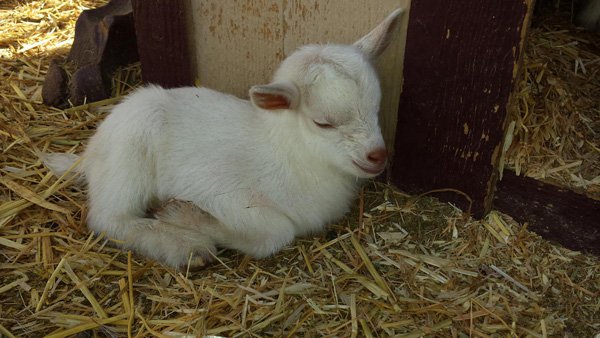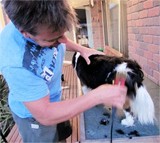
There are several different species of Dwarf hamsters and they all make wonderful pets. Although they are smaller then their Syrian cousins, they require the same amount of care.
Dwarf hamsters can often be more delicate, skittish, and faster to make an escape. Their small size allows them to fit into small cracks and spaces so they need a secure enclosure. Hamsters make their homes in tunnels that they dig themselves in the sand and dirt of their native homelands. In a home environment, they thrive in the plastic tubular habitats that are available to purchase at most pet supply stores. But, because of their small size, the hamster habitats might be too large for them to be able to climb and maneuver in properly. Luckily, they now make tubular habitats that are built smaller and specifically for mice. These types of enclosures are better suited for dwarf hamsters. They will also do well in a 10-20 gallon tank or a wire cage. Hamsters are naturally active creatures. So a wheel that can be placed inside the cage and can be used to run on is extremely important. One study found that a typical hamster could run up to five miles on their wheel. There are smaller wheels specifically made for dwarf hamsters.
A substrate on the bottom of your dwarf hamster's cage will satisfy their natural burrowing instincts. Owners need to use a dust free and absorbent material like wood shavings but not cedar or pine based products due to the repertory problems these materials can cause. The substrate in the hamster's cage should be completely emptied out and replaced every week. Hamsters like to make nests out of the substrates in their cages. Owners can also offer their hamsters a number of other nesting materials like paper towels, cotton, shredded paper, or tissues. Often times they like to construct their nests in a small space like a nesting box. Because they are naturally shy animals, they like the privacy that these boxes offer.
Because of their high metabolism, dwarf hamsters eat as much as the larger Syrian hamster. They eat different types of pellets, seeds, dried fruits and vegetables. Although hamsters tend to hoard their food in their nests rather then leaving it in their bowls, they still need to be offered a constant supply of fresh foods and a fresh water supply. Another important aspect that owners need to be concerned about is ensuring that their hamsters receive chewing toys. Hamsters' teeth never stop growing so they feel the constant urge to gnaw on anything that is around them. Without soft wooden toys to keep them busy they are liable to chew on plastic accessories which could injure them if chewed to become rough and broken.
In addition to replacing the substrate of the hamster's cage on a weekly basis, the cage and all of its accessories need to be washed weekly. Owners can use a light solution of soap and water and make sure to rinse everything thoroughly. The cage should also be completely dry before new substrate is added to the cage. Never use harsh chemicals because this can irritate hamsters. Although they require a moderate amount of care, the joy of owning a dwarf hamster far out weigh the amount of effort that needs to be put into the care of these amazing creatures.
Mary Wilbur is a Dwarf Hamster expert. For more great information on Dwarf Hamsters, visit http://www.dwarfhamsterscare.com
 The Often Forgotten Health Problems Obesity Causes In Cats And Dogs
The Often Forgott
The Often Forgotten Health Problems Obesity Causes In Cats And Dogs
The Often Forgott
 An Introduction To The Pinscher Dog Breeds
An Introduction T
An Introduction To The Pinscher Dog Breeds
An Introduction T
 Bed bug killer sprays- a convenient way of getting rid of bed bugs
Bed bug killer sprays- a convenient way of getting rid of
Bed bug killer sprays- a convenient way of getting rid of bed bugs
Bed bug killer sprays- a convenient way of getting rid of
 How to groom your dog from home
How to groom your dog from home
 Obesity In Dogs
Obesity In Dogs
Obesity In Dogs
Obesity In Dogs
Copyright © 2005-2016 Pet Information All Rights Reserved
Contact us: www162date@outlook.com